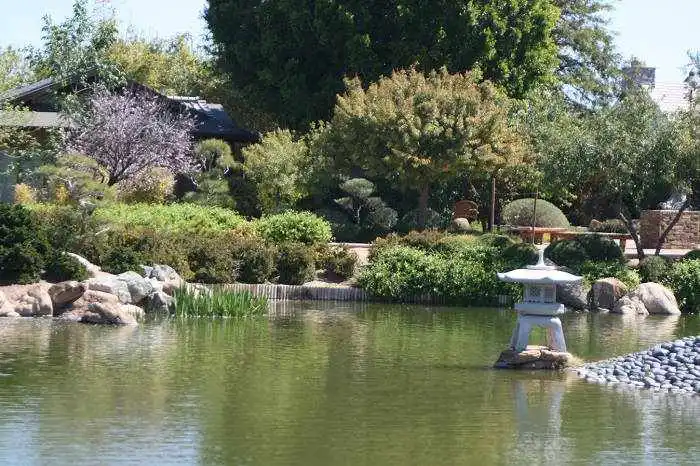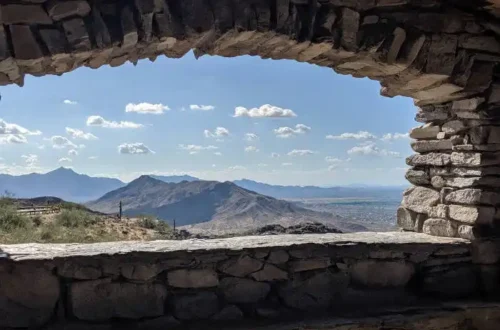Best Time to Visit Phoenix – Month-by-Month Guide + Insider Tips
Thinking of visiting Phoenix? Find out the best time to visit Phoenix and Central Arizona. To help you plan your trip we have included some average temperatures by month.
The Best Time to Visit Phoenix – Central Arizona
The best time to visit Phoenix is Spring and Fall. March, April, late September, and October are the ideal time to visit. However, when you want to visit will largely depend on your preferences for weather and activities. Here’s a guide of Phoenix weather by month to help you choose the best time for your visit:
Spring (March to May) – The Best Time to Visit Phoenix
Spring is the best time to visit Phoenix, if you want to spend a lot of time outdoors. March and April high temperatures will be in the mid 70’s and 80’s. This is a great time of the year to hike in Phoenix.
If we had good winter rains the wildflowers like lupine and poppies are in bloom in March. The desert is in full bloom in April. Temperatures will start to climb in May and will be in the 90’s.
The average temperature in March is around 50 degrees in the evening and up to 76 degrees, April is 60-85 degrees, and May is 70-95 degrees.
- Weather: Pleasant and warm with daytime temperatures ranging from the mid-70s to mid-90s °F (24-35°C). Nights are cooler, making for comfortable evenings.
- Pros: Ideal for outdoor activities like hiking, exploring parks, outdoor dining, and enjoying local events like Spring Training. The desert blooms beautifully, and it’s a popular time for tourists. If we had good winter rains the wildflowers are in bloom in March. Great time to visit the Desert Botanical Gardens.
- Cons: This is the busiest time of year in Phoenix and in Arizona.

Summer (June to August)
Summer months will have the least amount of tourists. Typical June temperatures in the 100+ range. It is usually 80 degrees at night. June is typically the hottest month in Phoenix with no precipitation. For example, in June I was up at 3am with my puppy and it was 80 degrees at that time. In May it is usually nice and cool early in the morning.
July and August temps will be 100+ degrees during the day (110+ is not unusual) and 80+ degrees at night. In addition to the high temperatures, the summer months bring higher dew points and humidity.
- Weather: Extremely hot, like a sauna, with temperatures often exceeding 100°F (38°C) and sometimes reaching up to 115°F (46°C). Think about when you preheat your oven and then open it, that is what the breeze feels like in Phoenix. It doesn’t really cool off in the summer in Phoenix. Nights are usually above 80°F (27°C), often near 100°F (38°C). The past couple years have had more days above 110°F than in the past with less rain. Heavy rain and dust storms are common during the monsoon months. Dust storms can create low-visibility while driving similar to white out conditions during a snow storm.
- Pros: Lower hotel rates and fewer tourists. If you enjoy indoor activities, this is a good time for visiting museums, shopping, and dining. This is the season to go swimming or tubing on the river! We don’t swim year round in Phoenix, like many believe, unless there is a heated pool. Swim season typically starts (and ends) the same time of year here as other parts of the country. If you have a pool, night swimming is the best. No sun beating on you and it is still 80 degrees after the sun goes down.
- Cons: The intense heat can limit outdoor activities, though early mornings and late evenings are more bearable. If you’re visiting this time of year we recommend staying at a hotel that has a swimming pool. This is not hiking weather, especially when your body is not used to the heat and dry air.

Fall (September to November)
Fall is a great time to visit Arizona. By the end of September the temperatures will start to cool. By this time of year anything under 100 degrees feels great, so I guess it is all relative. The average temperature in September is up to 100 degrees during the day and high 70’s at night.
October average temperatures are 65 to 90 degrees. November is the mid 50’s to 70 degrees. The leaves will start to change color in Flagstaff and Sedona in October. If you visit the arboretum near Phoenix in November you can see the Chinese Pistache leaves turn red.
- Weather: Warm to hot at the start of September, with temperatures gradually cooling to the mid-70s to mid-80s °F (24-30°C) by November. Nights are cooler and comfortable. This is a beautiful time of year to visit.
- Pros: Great for outdoor activities, hiking, festivals, and events. The weather is pleasant, and it’s less crowded compared to spring.
- Cons: Early September can still be quite hot, though it’s typically bearable compared to summer. Believe it or not most people have stopped using their pools by this time. The nights will cool down and then pools are not as warm during the day.
Winter (December to February)
January is the coldest month in Phoenix. With low humidity it feels cooler here than other regions with the same temperature. December through February will have average temperatures from 45 – 65 degrees. January will be the coldest month and it is not unusual to have a few nights dip to 30 degrees, so sensitive plants need to be covered.
- Weather: Mild and cool with daytime temperatures ranging from the mid-60s to mid-70s °F (18-24°C). Nights can be chilly, dropping to the 40s °F (4-9°C) and even to freezing a few days each season. Since the humidity is very low, mid-60’s feels colder than in areas with humidity. Bring pants, a jacket or long sleeves for the evening. January is the coldest of the winter months.
- Pros: Perfect for escaping colder climates elsewhere, enjoying outdoor attractions, and attending winter events. It’s the peak tourist season, so there are plenty of activities and events.
- Cons: Higher prices for accommodation and attractions due to the influx of tourists and snow birds. Some areas can be crowded. Traffic will pick up. Some may be disappointed, but you wouldn’t want to swim this time of year unless the pool is heated.

Best Time to Visit Phoenix
- Best Overall: Spring and fall offer the most comfortable weather and are ideal for outdoor activities.
- For Budget Travelers: Summer has lower accommodation rates but be prepared for extreme heat and choose indoor activities.
- For Winter Escapes: Winter provides mild temperatures and a chance to enjoy the area without the heat.
No matter when you visit, Phoenix offers a range of activities and attractions suited to different weather conditions and personal preferences.
Arizona Weather By Month
Vising another area in Arizona? We’ve added weather information for each region









